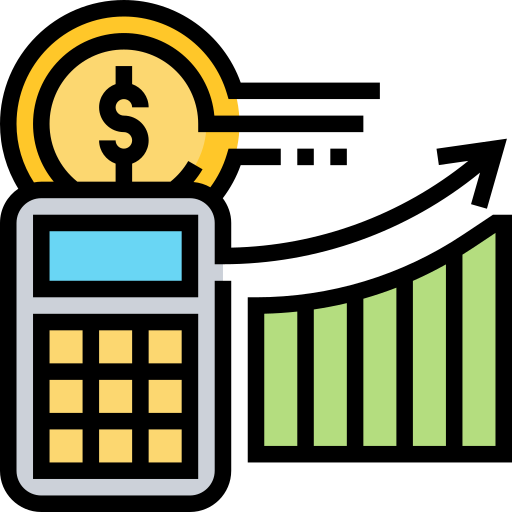What is Expense Ratio?
An Expense Ratio is a measure of the costs associated with running a mutual fund. The expense ratio includes operating expenses such as management fees, marketing, distribution fees, and administrative costs. Administrative costs include
- Trading costs
- Shareholder servicing and 12b-1 fees.
The expense ratio is expressed as a percentage (i.e., 1.00%) of the fund’s Net Asset Value. Typically, larger funds have higher expense ratios because they are charged at the same fixed rate regardless of whether the mutual fund has $100 million or $10 billion in assets under management.
What is an Expense Ratio Calculator?
The Expense Ratio Calculator is a helpful tool for calculating the amount you will pay for the performance of your ETF (Exchange-Traded Fund) investments. Thus simplifying even the least complicated security to do numbers crunching on, the ETFs.
We’ve developed an expense ratio calculator to help you take the guesswork out of income and living expense projections in your retirement planning: a financial calculator to determine income and living expenses when retiring.
How does the Expense Ratio Calculator work?
The Expense Ratio Calculator will help you examine mutual funds, ETFs, and stocks on the NYSE and AMEX, calculate expense ratios and performance, view the results in a table and as a graph, and compare them to appropriate benchmarks.
The expense ratio calculator makes it easy to get the information you need. Just enter the expense ratio and expense account data for the advisor-sold wrap and non-wrap programs and the expense ratio calculator will show you how much of your assets are being used in these advisement fees.
Use the Funds tab to calculate expense ratios based on fees of individual funds or to compare two or three funds against each other. The Investment Vehicles tab provides detailed information about investment vehicles such as mutual funds and ETFs. You can also learn about benchmark index strategies used by stockbrokers in the Benchmarks tab.
How Important is the Expense Ratio?
Like most things in investing, it depends on how you look at it. That’s why we put together this handy calculator to help you get a handle on how much money you would save and make by choosing different funds with different expense ratios.
Finding a good mutual fund with a reasonable expense ratio is priority No. 1 for most investors. Lower ratios mean lower fees. This expense ratio calculator shows you how much you’re losing in fees over the first 10 years of your investment and over the 30-year mark, based on a simulated S&P 500 return and fee schedule. Start saving now, and the sooner you start, the bigger your nest egg will be.
What is a good expense ratio?
A good expense ratio is 0.05% or less if you are more concerned with expenses than returns and 0.15% or less if you are more concerned with returns than expenses.
The expense ratio calculator lets you see how different expenses at a target rate of return will affect your portfolio. You can get a personalized estimate of how different portfolio characteristics affect your annual expenses with our expense ratio calculator.
Think of it as the clothing size of your portfolio. It’s pretty tough to change throughout your life. So use the expense ratio calculator to help you plan out your retirement income.
Conclusion
Knowing how much money you’re saving on your investment can bring a smile to any investor’s face. Use the expense ratio calculator to determine the annual fee that will be charged in the future and determine the break-even point of each fund in your portfolio so you can plan your future purchases.
The Expense Ratio Calculator is designed to help you analyze your investment expenses and compare them against the broad market. It can be used by both individuals and businesses.
Frequently Asked Questions
How do you calculate the expense ratio?
The expense ratio is a measure of the mutual fund costs over time. It is calculated by dividing the total fund operating expenses by the average dollar value of assets under management for the same period.
How much is a 0.75 expense ratio?
Use the expense ratio calculator to determine how much expenses really cost you. Just plug in a single fund’s expense ratio, and the calculator will calculate the impact of that expense ratio on your net returns (i.e., how much returns are reduced by expenses).
What is a good expense ratio percentage?
This expense ratio calculator lets you quickly find a good expense ratio percentage for comparing funds and ETFs. Start by entering your expected return and risk tolerance. Next, enter the available funds and ETFs that meet those criteria. Select the expense ratio from the results that best matches your goal of investing in funds with low expense ratios.
How do you calculate the expense ratio with an example?
The expense ratio is a measure of operating expenses and is also referred to as management fees or annual fees. The expense ratio measures the total cost of an investment, both operating and financing costs, expressed as a percentage. The Operating Expense Ratio (OER) is calculated by dividing the annual fund operating expenses by the highest one-year total return of any portfolio he has ever published.
By law, it’s calculated every year according to a set formula. This calculator will show you how to calculate the profit ratio and provide an example with actual.





